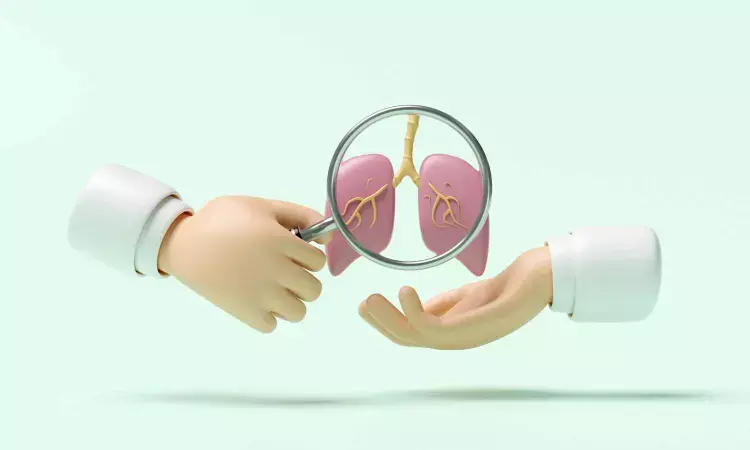- Home
- Medical news & Guidelines
- Anesthesiology
- Cardiology and CTVS
- Critical Care
- Dentistry
- Dermatology
- Diabetes and Endocrinology
- ENT
- Gastroenterology
- Medicine
- Nephrology
- Neurology
- Obstretics-Gynaecology
- Oncology
- Ophthalmology
- Orthopaedics
- Pediatrics-Neonatology
- Psychiatry
- Pulmonology
- Radiology
- Surgery
- Urology
- Laboratory Medicine
- Diet
- Nursing
- Paramedical
- Physiotherapy
- Health news
- Fact Check
- Bone Health Fact Check
- Brain Health Fact Check
- Cancer Related Fact Check
- Child Care Fact Check
- Dental and oral health fact check
- Diabetes and metabolic health fact check
- Diet and Nutrition Fact Check
- Eye and ENT Care Fact Check
- Fitness fact check
- Gut health fact check
- Heart health fact check
- Kidney health fact check
- Medical education fact check
- Men's health fact check
- Respiratory fact check
- Skin and hair care fact check
- Vaccine and Immunization fact check
- Women's health fact check
- AYUSH
- State News
- Andaman and Nicobar Islands
- Andhra Pradesh
- Arunachal Pradesh
- Assam
- Bihar
- Chandigarh
- Chattisgarh
- Dadra and Nagar Haveli
- Daman and Diu
- Delhi
- Goa
- Gujarat
- Haryana
- Himachal Pradesh
- Jammu & Kashmir
- Jharkhand
- Karnataka
- Kerala
- Ladakh
- Lakshadweep
- Madhya Pradesh
- Maharashtra
- Manipur
- Meghalaya
- Mizoram
- Nagaland
- Odisha
- Puducherry
- Punjab
- Rajasthan
- Sikkim
- Tamil Nadu
- Telangana
- Tripura
- Uttar Pradesh
- Uttrakhand
- West Bengal
- Medical Education
- Industry
Point-of-care ultrasonography found to be effective in identifying pneumothorax: Study

A new study published in The Journal of Emergency Medicine showed that in emergency trauma patients, point-of-care ultrasonography (POCUS) can reliably detect clinically severe pneumothorax (PTX).
Although CT is the gold standard for identifying PTX, researches pointed out that moving patients to imaging, particularly if they are unwell, can take a lot of time. Furthermore, although chest x-rays are another method for PTX identification, prior research indicates that they may overlook as many as 50% of PTX patients.
POCUS is now a practical emergency imaging technique that may be applied to trauma evaluation at the patient's bedside. Prior research demonstrated the excellent sensitivity and specificity of the modality for PTX. Recent studies, however, have called into doubt how sensitive POCUS is for diagnosing PTX in trauma patients.
Therefore, using the red criteria of the National Expert Panel on Field Triage, 2021, Daniel Singer and team carried out this study to ascertain the accuracy of emergency physician (EP) POCUS in recognizing clinically important PTX in patients with high-severity trauma.
This research looked back at a level 1 trauma center's high-severity trauma cases over a 3-year period. CT scan results or the clinician's statement of a "rush of air" after tube thoracostomy implantation were used to identify whether PTX was present or not. If a patient needed a tube thoracostomy within 2.5 hours of triage, they considered PTX to be clinically severe. Emergency providers' diagnostic test characteristics for POCUS and CXR were computed.
PTX was clinically significant in 40 out of 924 patients. For a sensitivity of 68% (95%CI, 52-80), specificity of 100% (95%CI, 19.8-100), positive predictive value (PPV) of 100% (95%CI, 84-100), and negative predictive value (NPV) of 14.3% (95%CI 2.5-43.9), POCUS found 26/38 who had survived before CT.
The sensitivity to 32/38, 84% (95%CI, 70-93), specificity, PPV 100% (95% CI 87-100), and NPV 25% (95%CI, 4.5-64) were all increased by fellowship-trained EPs reviewing the POCUS. The overall sensitivity and specificity of plain CXR were 48.1% (CI 34.2-62.2) and 99% (CI 97.5-99.6), respectively.
Overall, these findings suggest that POCUS can accurately identify clinically severe PTX, particularly when it is overseen by doctors with fellowship training. Less experienced EPs may need more supervision from more experienced EPs and should use appropriate technique when acquiring and interpreting images.
Reference:
Daniel D Singer, Hayley Scott, Ali Khan, Alexandra Donnelly, Adam J Singer, Isadora Botwinick, Randeep Jawa, Ambika Mukhi, Henry C Thode, Michael Secko, ED accuracy of POCUS in identifying clinically significant PTX in high severity trauma patients., The Journal of Emergency Medicine, 2025, https://doi.org/10.1016/j.jemermed.2025.07.009.
Neuroscience Masters graduate
Jacinthlyn Sylvia, a Neuroscience Master's graduate from Chennai has worked extensively in deciphering the neurobiology of cognition and motor control in aging. She also has spread-out exposure to Neurosurgery from her Bachelor’s. She is currently involved in active Neuro-Oncology research. She is an upcoming neuroscientist with a fiery passion for writing. Her news cover at Medical Dialogues feature recent discoveries and updates from the healthcare and biomedical research fields. She can be reached at editorial@medicaldialogues.in
Dr Kamal Kant Kohli-MBBS, DTCD- a chest specialist with more than 30 years of practice and a flair for writing clinical articles, Dr Kamal Kant Kohli joined Medical Dialogues as a Chief Editor of Medical News. Besides writing articles, as an editor, he proofreads and verifies all the medical content published on Medical Dialogues including those coming from journals, studies,medical conferences,guidelines etc. Email: drkohli@medicaldialogues.in. Contact no. 011-43720751


